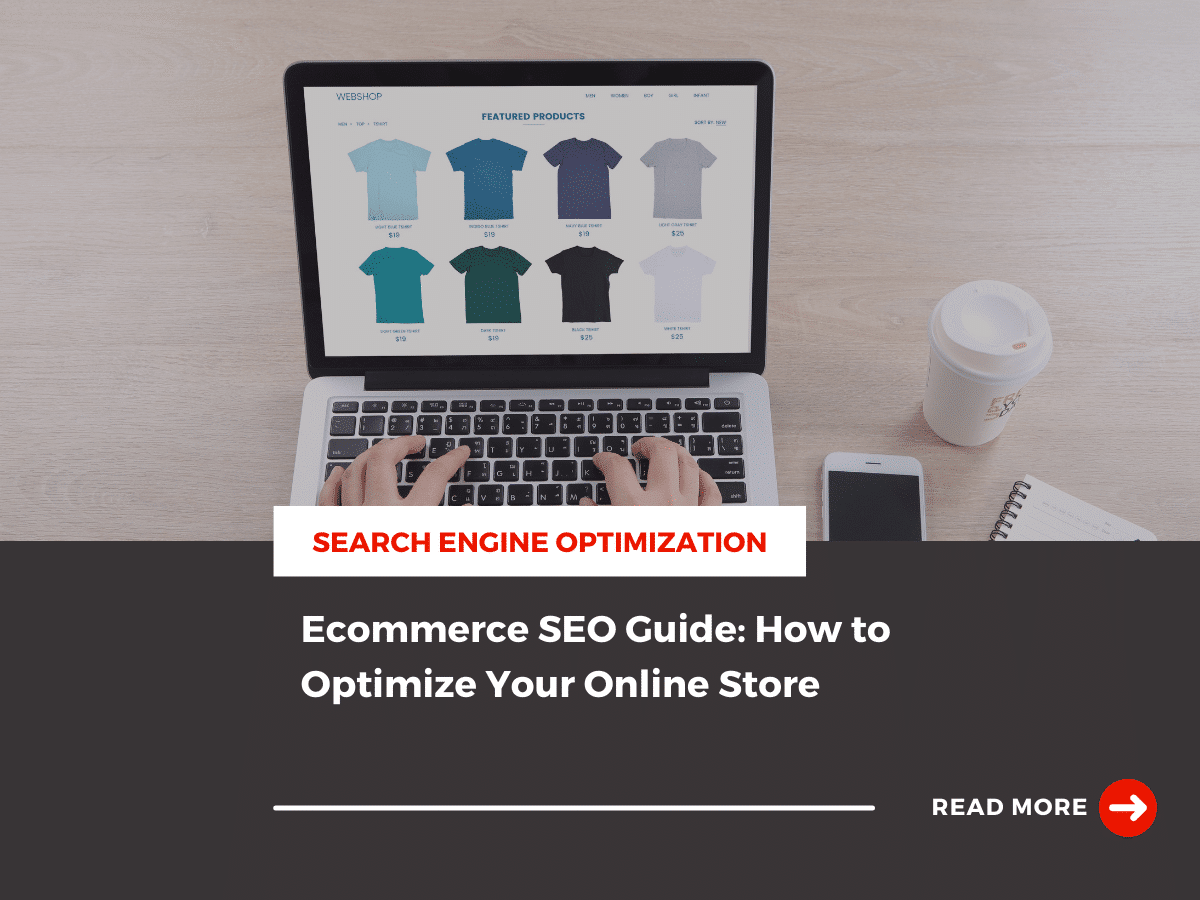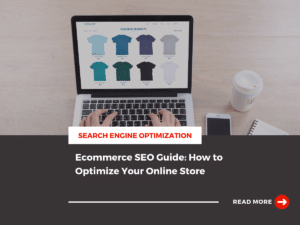Did you know over 75% of consumers shop online at least once a month? While nothing can beat the experience that a brick-and-mortar provides, eCommerce and online stores continue to rapidly grow in demand. In fact, the eCommerce industry is expected to grow to 604.5 billion in 2024 and 710.42 in 2025.
The key to success in a saturated market is to focus on fine-tuning your approach to eCommerce SEO. A search engine optimization strategy will help you grow your online presence and increase organic web traffic to your site. Every new web visitor who lands on your website is an opportunity to turn a prospect into a paying customer.
We’re here to walk you through how important SEO for Ecommerce is and help you develop a strategy that will help you maintain your competitive edge.
1. eCommerce SEO Basics
To drive sales and grow your online presence, you must focus on implementing a search engine optimization strategy that aligns with consumer behavior. SEO is vital to getting your products seen by your target audience. Without a solid foundation or a grasp on SEO for eCommerce, you'll never outrank your competitors.
To get started, you'll want to first dial down the basics. A successful eCommerce SEO strategy is built on a solid keyword foundation and a logical hierarchical site structure.
Keyword Research
Ensure you use the right keywords for your content and product listings. Consider what consumers are searching for when looking for products like yours, and find innovative ways to incorporate this language into your product descriptions and landing pages. Platforms like SEMrush can help you find keywords you can rank for and use on your landing pages and product descriptions.
Build a Logical Site Structure
Site structure is the second most important ranking factor for online stores. You must have a logical, hierarchical structure with a concise site navigation, categories, sub-categories, and product pages. This will improve your crawlability and the user experience.
Once you have the Ecommerce SEO basics dialed in, it's time to dive into the nitty-gritty.
2. On-Page Optimizations
On-page optimizations focus on the parts of your product and landing pages that impact your search rankings. This includes:
Product Title Tags
Developing product title tags with keywords will improve the user experience and search engine visibility.
URL Structure
The URL structure helps search engine crawlers understand what the landing page is about and how it should be indexed. You should also have a consistent URL structure for your products and category pages.
Product Descriptions
The product descriptions should aim to inform, educate, and persuade your customers. You should use the proper keywords and ensure the product descriptions are unique for each product on your website. With the right keywords, you can help your product pages rank higher in the SERPs while educating your current customers.
Image Optimization
All of the images on your website should be optimized for SEO. You'll want to include ALT tags to all images you use so search engine crawlers can index your images. You'll also want to compress the images on your website to improve load speed and the user experience. Lastly, always use high-quality visuals and images for your landing pages and products.
Internal Linking
There should be internal linking in your site navigation and strategically placed throughout your website to help upsell your products to existing customers. Another process to look into is called breadcrumbing. Breadcrumbing is an eCommerce SEO tactic that creates a "trail" for each customer that shops on your website.
3. Technical SEO for Ecommerce
Technical SEO focuses on the technical aspects of your website and the functionality factors that impact the user experience. The factors that an E-commerce would want to focus on include:
- Mobile-friendliness: We live in a digital age, where over 55.3% of website traffic comes from a mobile device. A responsive design ensures your mobile shopping customers get a high-quality user experience.
- SSL Certificate: SSL stands for Secure Sockets Layer. This certificate protects your customer's data and builds trust with your target audience. Google and other search engines also prioritize websites that are safe and secure.
- Sitemaps and Robots.txt: For your website to rank, search engines must be able to crawl your website. An organized site structure can increase your crawability, and Robots.txt allows you to choose which pages can be crawled.
- Duplicate Content: Duplicate content can weaken your SEO performance. Every product should have unique content. This means you shouldn't use the manufacturer-provided product descriptions. If you have multiple variants of the same product, you'll want to add dropdown menus to one product page to avoid duplicates.
- Optimize Out-of-Stock Pages: If a product is out of stock, you'll want to ensure it's clearly labeled on the product page. You'll also want to optimize the page by adding product alternatives or providing back-in-stock notifications to customers. This will lower your bounce rate and help you maintain your rankings.
- Add a Live Chat: A live chat feature can improve the user experience and increase user engagement. This can increase your CTR and keep web visitors on your page for longer periods of time.
Get a free SEO technical audit
4. User Experience and SEO
In 2021, Google changed its algorithm and announced that the UX design would impact your search rankings. UX looks are the user experience and how consumers interactive with your website design. If you have a cluttered layout, complex navigation, or a non-responsive design, Google may choose to rank your competitors over you.
Site Navigation
An intuitive navigation structure is vital to the user experience. Your website should also have a navigation menu at the top of the page with subcategories. The navigation should be easy to use from a customer's perspective.
Search Functionality
The products on your website should be easily searchable. To improve your search functionality, you'll want to ensure you're using the right keywords for each product. You'll also want to ensure your site's internal search function works properly. A great way to improve your internal search functionality is with a refined search option or adding automated product suggestions.
Checkout Process
It's expected that over 70% of online shoppers abandoned their carts. If you're experiencing an uptick in abandoned cart rates, there may be a flaw in your checkout process. A faulty checkout process can lead to a higher bounce rate and longer dwelling times, two factors search engines consider.
5. Local SEO for Ecommerce
While Google My Business is commonly associated with retail stores and restaurants with physical locations, they aren't the only businesses that can benefit from the GMB platform. In fact, Ecommerce companies can create a GMB listing to appear in local search results and build their online reputation. With a GMB account, you can:
- Collect and respond to online reviews
- Get your brand noticed in relevant search results
- Improve your local search rankings
- Increase web traffic and get your products noticed by a new audience
6. Content Marketing for Ecommerce
Content marketing is a powerful tool your eCommerce can use to enhance brand awareness and help your content rank higher in the SERPs. With the right keywords and content types, you can establish yourself as an industry leader and educate your audience. There are many different types of content to engage with your audience.
These are two of the most popular content types that can benefit Ecommerce SEO:
Blogging: Whether you write a how-to tutorial or gift guide for the holidays, blogging is a powerful content tool to promote your products and showcase your expertise. With blogging, you can educate, sell, and inform your customers. This content is also great for expanding your reach and helping your website rank higher in the SERPs.
Video Marketing: Video marketing is arguably one of the most popular content types. In a recent study, over 91% of consumers wanted to experience more video content from brands. There are many ways to use video marketing in your content marketing strategy. Whether it's for a product launch, how-to, or you're jumping on a TikTok trend.
There are also different types of content you'll want to include on your website for online store SEO purposes. This type of content is beneficial to your strategy and can keep your customers informed and engaged with your content.
Here are a few examples:
- FAQs
- Glossary Pages
- Press Releases
- Product Launches
- Case Studies
- Infographics
No matter what types of content you decide to focus on, you'll want to ensure everything is optimized for SEO and has the correct keyword and meta tags.
Take Your Ecommerce SEO Strategy to the Next Level With Kanbar Digital
At Kanbar Digital, we're the experts in online store SEO. Our team has hands-on experience writing keyword-rich product descriptions, improving website user experience, and helping with on-site SEO.
We're here to help you fine-tune your strategy to rank higher in the SERPs and increase organic web traffic to your online business. With our team of SEO experts on your side, you can scale your business in the right direction.




